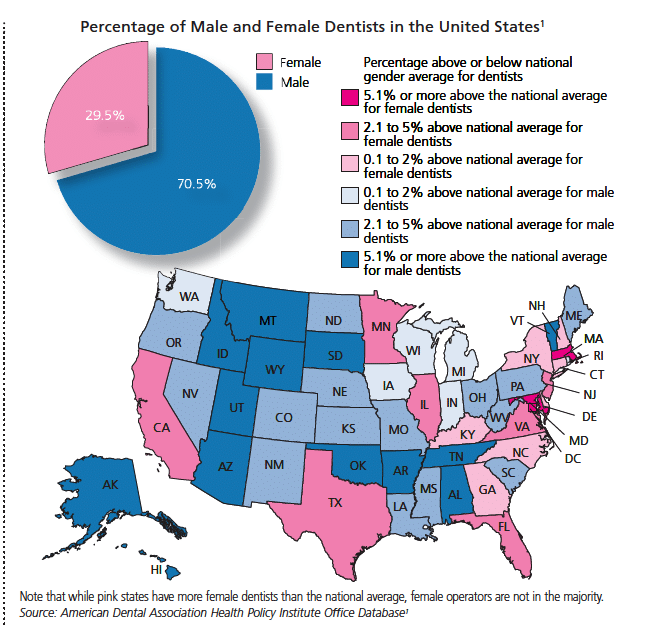Progress Noted in the Dental Gender Gap
Although the percentage of female dentists has been growing, dentistry remains primarily a male profession.
Although the percentage of female dentists has been growing, dentistry remains primarily a male profession. A 2016 analysis by the American Dental Association (ADA) Health Policy Institute of the ADA’s master file of active dentists found that just 29.5% were women.1 But female dentists are not evenly distributed across the United States. Although there are no states where female dentists are in the majority, 16 states (plus the District of Columbia) boast a percentage of female dentists that’s higher than the national average.1
States above the national average tend to be more populous, with large metropolitan areas, such as Chicago, Houston, Los Angeles and New York, while states that are above the national average in percentage of male dentists tend to be more rural. The states with 80% or more male providers are Arkansas, Montana, Idaho, Wyoming and Utah. At 94.4%, Utah has the highest percentage of male dentists in the country.1
It is not clear why female dentists appear to prefer more urban and populous states. However, drawing more female dentists to other areas could be good for practices and patients alike. In a study of patient satisfaction, the National Dental Practice-Based Research Network found that “male dentists were less likely than female dentists to be aware of the importance to patients of both procedural information and a discussion of restorative material choices.”2
The authors offer two possible explanations. One is that women dentists communicate differently, and perhaps more thoroughly, with patients. The second is that patients may treat female operators differently, perhaps asking more questions when they do not understand.2 Both seem plausible. In addition, since better comprehension of care and increased patient satisfaction are a plus for any practice, having a mix of female and male communication styles could be helpful to all involved. Furthermore, figuring out what draws women dentists toward some states more than others could be an important data point in understanding how to make the field more welcoming to women overall.
REFERENCES
- The American Dental Association Health Policy Institute Office Database, created using the American Dental Association master file of data on active dentists in 2016.
- Riley JL III, Gordan VV, Hudak-Boss S, et al. Concordance between patient satisfaction and the dentist’s view; findings from the National Dental Practice-Based Research Network. J Am Dent Assoc. 2014;145:355–362.
From Decisions in Dentistry. October 2018;4(10):52.


